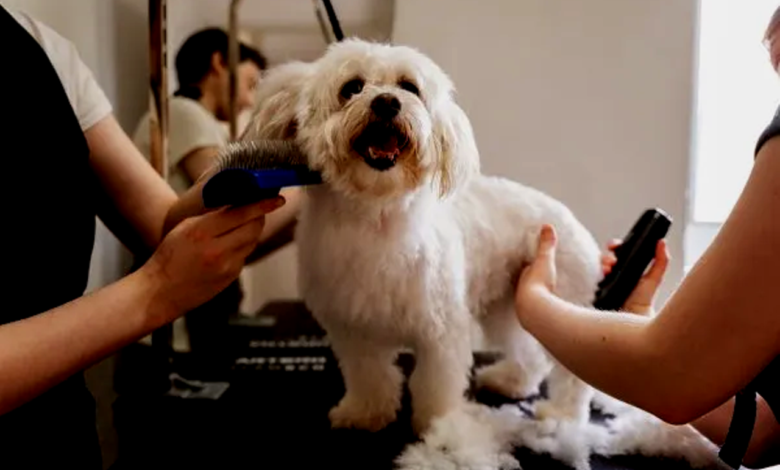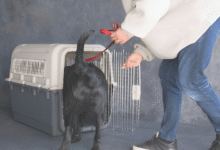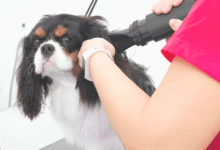
Grooming Tips to Keep Your Pet Healthy and Happy
Grooming tips for a healthy pet Learn essential brushing bathing & care routines to keep your furry friend happy & thriving.
Proper Grooming Tips is the cornerstone of keeping your pet healthy and happy. Beyond just maintaining a clean and shiny coat, regular Grooming Tips helps prevent skin infections, reduces shedding, and allows for early detection of potential health issues like parasites or lumps. Whether you have a playful pup, a graceful cat, or another furry companion, establishing a consistent grooming routine ensures their comfort and well-being while strengthening the bond between you and your pet.
From brushing and bathing to nail trimming and dental care, each aspect of grooming plays a vital role in your pet’s overall health. Neglecting these essentials can lead to discomfort, infections, and even long-term health problems. This guide will walk you through the best grooming practices to keep your pet looking and feeling their best, ensuring they live a longer, happier life by your side.
Grooming Tips to Keep Your Pet Healthy and Happy
Early Detection of Health Issues
Regular grooming provides the perfect opportunity to spot potential health problems before they escalate. As you brush your pet’s coat or clean their ears, you can check for unusual lumps, skin irritations, fleas, or ticks. Catching these issues early means quicker treatment and prevention of more serious conditions, saving both discomfort and costly vet Grooming Tips.
Maintaining Physical Comfort and Hygiene
Consistent Grooming Tips prevents painful matting, overgrown nails, and dirty ears that can lead to infections. It also helps distribute natural skin oils, keeping their coat shiny and reducing dryness or irritation. Well-groomed pets are not only cleaner but also more comfortable, avoiding the stress and pain that comes with neglected care. A proper routine directly contributes to their overall well-being and happiness.
Brushing Your Pet’s Coat
Brushing is one of the most important aspects of pet Grooming Tips. The frequency depends on your pet’s breed and coat type. Long-haired pets, such as Persian cats or Golden Retrievers, require daily brushing to prevent tangles and mats. Short-haired breeds, like Beagles or Domestic Shorthair cats, benefit from weekly brushing to remove loose fur and reduce shedding. Always use the right brush for your pet’s coat slicker brushes work well for long fur, while bristle brushes are ideal for short coats. Regular brushing also stimulates blood circulation, improving skin health.
Bathing Your Pet the Right Way
Frequency & Preparation for Bathing
Dogs typically need bathing every 4-6 weeks, while most cats rarely require baths due to their self-grooming habits unless they get into something sticky or dirty. Before bathing, always brush your pet first to remove loose fur, tangles, and debris, making the bath more Grooming Tips. Use lukewarm water and a pet-specific shampoo (hypoallergenic for sensitive skin) to avoid irritation. Be careful to avoid soap in their eyes and ears, as this can cause discomfort or infections.
Proper Drying & Skin Protection
After a thorough rinse, gently towel-dry your pet to remove excess water. If using a blow dryer, keep it on the lowest heat setting and maintain a safe distance to prevent burns or overheating. Over-bathing can strip their coat of natural oils, leading to dry, itchy skin so stick to the recommended bathing schedule. For pets with skin conditions, consult your vet for medicated shampoos or specialized care to maintain a healthy coat and skin barrier.
Nail Trimming for Comfort and Health
Overgrown nails can cause discomfort, affect posture, and even lead to joint problems. Dogs that walk on hard surfaces may naturally wear down their nails, but indoor pets need regular trimming. Cats also require nail care to prevent painful ingrown claws. Use pet-specific nail clippers and avoid cutting the quick (the pink part inside the nail), which can bleed and cause pain. If you’re unsure, ask your veterinarian or a professional groomer for guidance. Gradually Grooming Tips your pet to nail trimming by offering treats and praise.
Ear Cleaning to Prevent Infections
Prevention Through Proper Cleaning Technique
Pets with floppy ears or narrow ear canals (like Cocker Spaniels or Basset Hounds) need weekly ear checks and gentle cleaning to prevent infections. Use only vet-approved ear cleaners and a soft cotton ball never cotton swabs or sharp objects to wipe away visible dirt and wax from the outer ear canal. Avoid inserting anything deep into the ear, as this can push debris further in or damage delicate Grooming Tips. Regular cleaning helps maintain airflow and reduces moisture buildup that breeds bacteria and yeast.
Recognizing & Addressing Ear Infections Early
Watch for warning signs like redness, a foul odor, excessive head shaking, or pawing at the ears—these indicate a possible infection. Dark discharge or crustiness also warrants a vet visit, as untreated infections can lead to pain, hearing loss, or chronic Grooming Tips. For pets prone to recurrent ear problems, ask your vet about drying solutions or medicated rinses to use after swimming or baths. Early intervention keeps your pet comfortable and prevents complications.
Dental Care for Fresh Breath and Healthy Teeth
Oral hygiene is often overlooked but is vital for your pet’s health. Plaque buildup can lead to gum disease, tooth loss, and even heart Grooming Tips. Brush your pet’s teeth 2-3 times a week using a pet toothbrush and toothpaste (never human toothpaste). Dental chews and water additives can also help reduce tartar. Schedule professional dental cleanings as recommended by your vet.
Managing Shedding and Hairballs
Shedding is natural, but excessive hair can be a nuisance. Regular brushing minimizes loose fur around your home. For cats, hairballs are a common issue specialized diets and hairball remedies can help. Ensure your pet stays hydrated, as proper hydration reduces shedding.
Paying Attention to Skin and Paw Care
Your pet’s skin and paws need regular attention to stay healthy. During routine grooming, check for dryness, rashes, or signs of fleas and ticks. For cracked paw pads, apply a pet-safe moisturizing balm to soothe and protect. In Grooming Tips, wipe their paws after walks to remove harmful de-icing chemicals that can cause irritation or poisoning.
Professional Grooming vs. DIY Grooming
While at-home Grooming Tips works well for basic care like brushing and nail trimming, professional groomers are essential for more complex tasks. Certain breeds such as Poodles, Shih Tzus, and Schnauzers require regular haircuts to prevent matting and skin issues. Professionals also safely perform delicate procedures like anal gland expression, which can be risky if done incorrectly. Additionally, groomers are trained to spot early signs of skin conditions, parasites, or infections that owners might miss.
Read More: Daily Supplements for Pets What North Dakota Owners Should Know
Conclusion
Regular grooming is essential for maintaining your pet’s health, happiness, and overall well-being. By incorporating brushing, bathing, nail care, and dental hygiene into their routine, you not only keep them looking their best but also prevent potential health issues before they arise. A well-groomed pet is a comfortable pet, free from the discomfort of matted fur, overgrown nails, or ear infections.
Making grooming a positive experience with patience, treats, and gentle handling will help your pet feel at ease during these sessions. Whether you handle grooming at home or seek professional help, consistency is key. By dedicating time to proper Grooming Tips, you’re ensuring your furry friend stays vibrant, healthy, and full of joy for years to come.
FAQs
How often should I bathe my dog?
Most dogs need a bath every 4-6 weeks, but it depends on their breed and activity level.
Can I use human shampoo on my pet?
No, human shampoo can irritate their skin always use pet-specific products.
How do I stop my pet from being scared of grooming?
Introduce grooming Tips, using treats and praise to create positive associations.
What’s the best way to trim a cat’s nails?
Use cat nail clippers and trim just the tip, avoiding the quick. Reward them afterward.
How can I reduce my pet’s shedding?
Regular brushing, a balanced diet, and proper hydration help control shedding.







